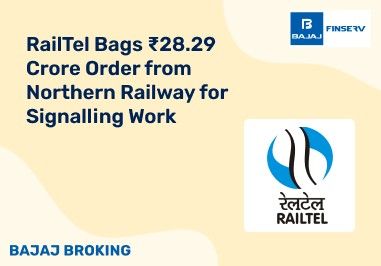BAJAJ BROKING
PDP Shipping & Projects IPO is Open!
Open a Free Demat Account
Trade Now, Pay Later with up to 4x
Track Market Movers Instantly
What is a Break-Even Point & How to Calculate it?
Introduction
A break-even point is when you neither make a profit nor a loss from a series of ongoing transactions. In trading too, the break-even point means the same. It is when a trader is neither losing money nor booking profits from his trades. In essence, it is a situation when the total costs incurred match the revenue generated. Now that we know what a break-even point is, let’s understand why it is important for trader to understand.
Significance of Break-even Point
Risk Management: The break-even point identifies the earliest exit point where you can avoid a loss in a trade.
Additional Read: What is risk management in stock market?
Trade Planning: Considering the break-even point helps set realistic profit targets and stop-loss levels.
Performance Evaluation: It aids in assessing the potential effectiveness of a trading strategy.
Psychological Comfort: Providing a clear minimum target level enhances emotional comfort while trading.
Significance of Break-even Point
To arrive at the break-even point value one has to be aware of certain components involved in break-even analysis.
1. Entry Price: The price of the stock at the time of entry.
2. Transaction Costs: All costs of entering the trade including commissions, fees, etc
3. Spread: This is the difference between the bid made and the ask price.
4. Position Size: One also has to be mindful of the number of units of the instrument involved in the trade.
How to Calculate the Break-Even Point
The break-even point or the break-even price can be determined by adding the total costs per unit to the entry price of the unit. Total costs per unit is calculated by dividing the total costs by the number of units held.
Step-by-Step Calculatio
The break-even analysis formula is; it is the sum of the entry price and the total costs per unit. The formula may differ for short trades.
Step 1: Record the entry price of the stock.
Step 2: Calculate the total costs by summing all transaction costs, including commissions and fees. If these costs are given as a total amount, divide by the number of units to find the per-unit cost.
Step 3: Adjust for the spread. If you are trading an asset with a bid-ask spread, include the spread in your total costs. If the entry price is the asking price, add the spread (the difference between the bid and the ask price) to your total per-unit cost.
For example, let's consider this situation:
The entry price of the asset: is 100 INR
Total Costs (including commission): 10 INR per share
Spread: 5 INR per share
So, the break-even price would be the sum of the entry price, the total cost per share, and the spread per share, which totals 115 INR (100 + 10 + 5).
The Break-Even Point for Short Trades
Calculating the break-even point for short trades follows a similar process, with the key difference being the deduction of total costs and spread from the entry price instead of adding them as in normal trades.
In the above example, for a short trade, the calculation would proceed as follows: The break-even price is derived by subtracting the total cost per share and the spread per share from the entry price. Using the provided example, the break-even price would be 85 INR (100 minus 10 minus 5).
Using Break-even Points in Trading Strategy
1. Setting Stop-Loss Orders: To control risk set stop-loss limits a little below the break-even point for long trades and above the point for short trades.
2. Profit Targets: Use the break-even point to set profit targets that are realistic and achievable. This can be done by aiming for profit at a point which is a certain percentage above the break-even point.
3. Risk-Reward Ratio: Break-even point helps us calculate the risk-reward ratio. Usually, when the ratio is greater than 1:2 the ratio is considered favorable.
4. Trade Evaluation: Break-even point can also help us evaluate the effectiveness of your trading strategy. Consistently failing to reach break-even point in trades is a sign to reassess the trading approach.
Here are a Few Key Points to Remember:
1. Variable Costs: In case the transaction costs include variable quantities or perhaps are a percentage of the trade, then this needs to be handled appropriately during the break-even point calculation.
2. Slippage: In fast-moving markets, there may be a difference in expected transaction prices and actuals, and this difference is called slippage. This needs to be considered during the calculation if applicable.
3. Taxes: Based on the legal and financial regulations applicable, capital gains taxes could impact your net profit, and thus your break-even point as well.
Conclusion
A thorough understanding of the break-even point is important for effective risk management and planning strategies in trading. The accuracy of the calculation can help us make informed decisions, and set proper stop-loss instructions and profit targets. Trading strategies and their performance can also be analysed using the break-even point. Whether the trades are straightforward or relatively more complex, the concept of break-even point can come in handy to enhance success in trading.
Disclaimer: Investments in the securities market are subject to market risk, read all related documents carefully before investing.
This content is for educational purposes only. Securities quoted are exemplary and not recommendatory.
For All Disclaimers Click Here: https://bit.ly/3Tcsfuc
Share this article:
Read More Blogs
Our Secure Trading Platforms
Level up your stock market experience: Download the Bajaj Broking App for effortless investing and trading













